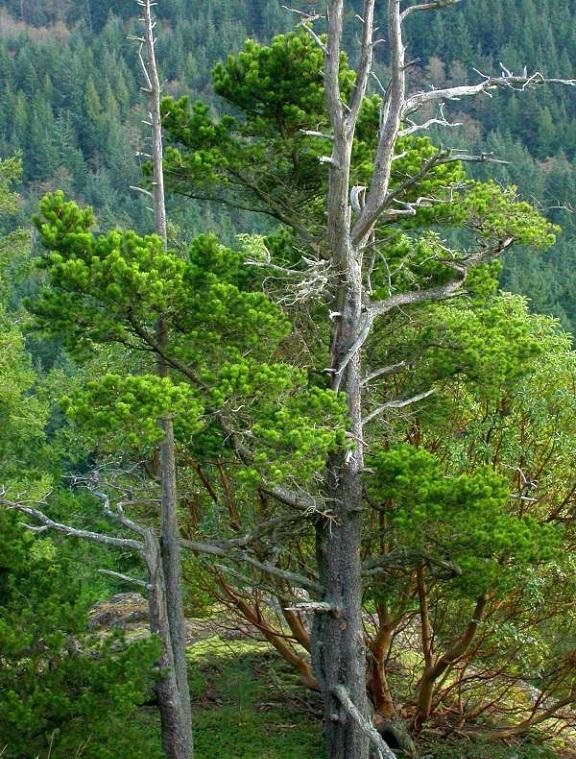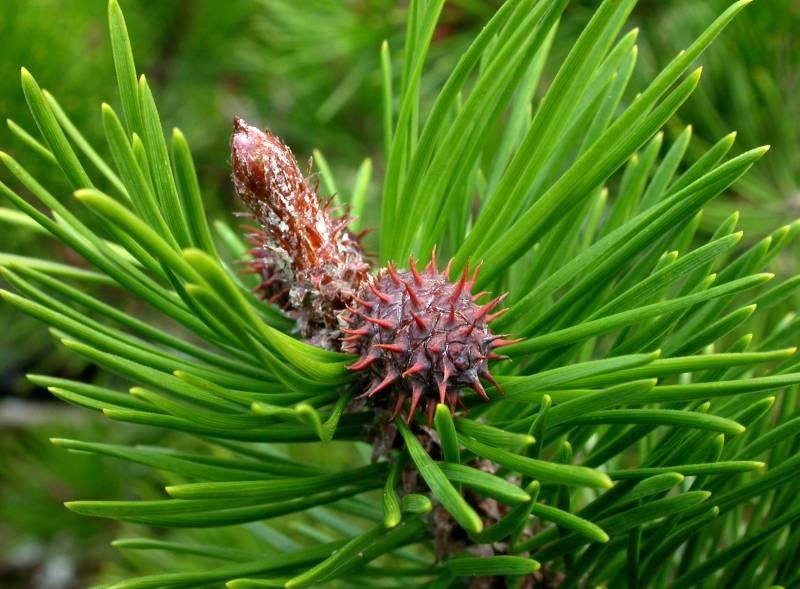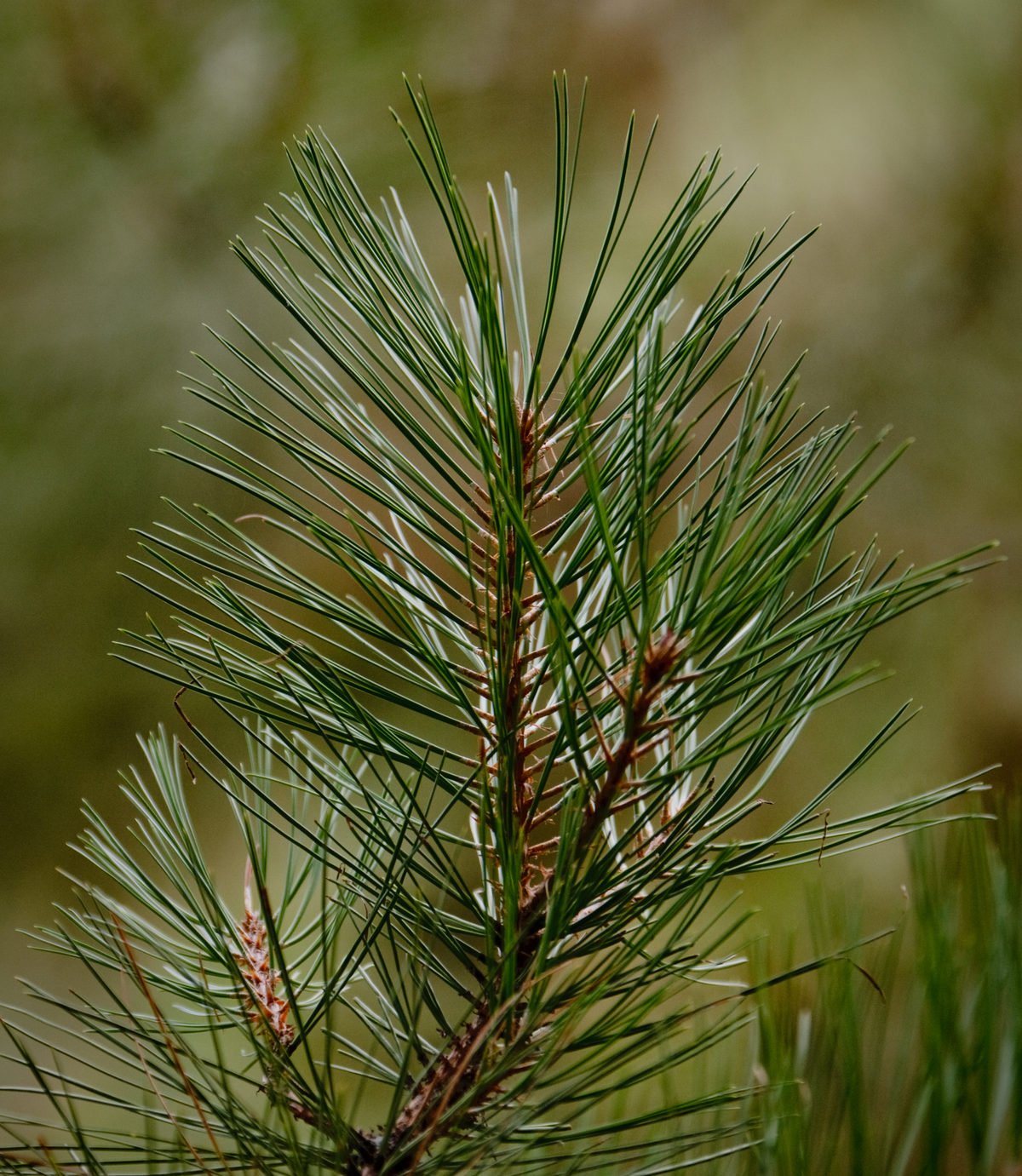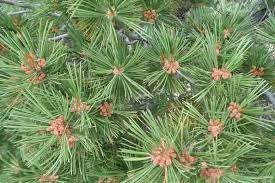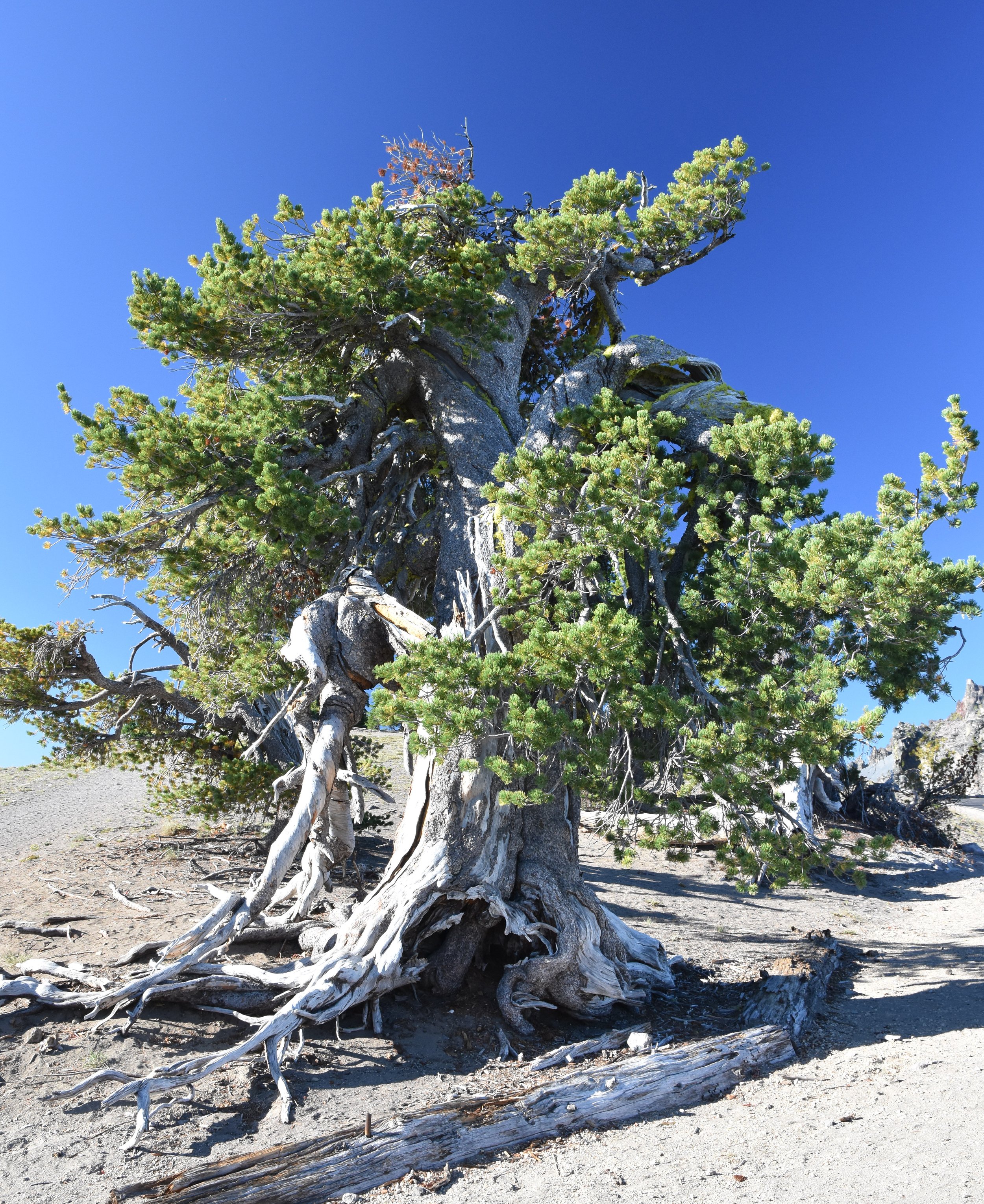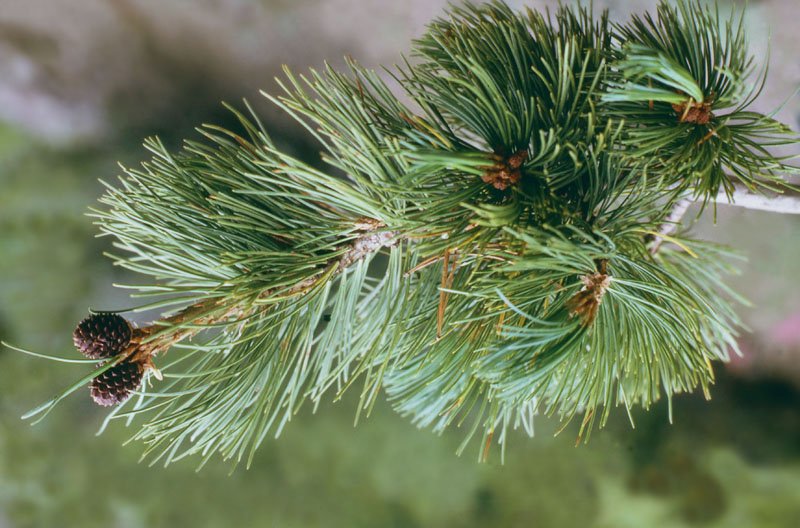February’s spotlight at Nectar Retreat on Bowen Island is the Pine tree. Read to the end and discover facts about Pine, how identify them, and ways they enhance well-being. Image credit: Irina Iriser
At Nectar Yoga Retreat, our commitment extends beyond providing serene yoga escapes; it delves into connecting with and stewarding the land, its flora and waterways. In keeping with this year’s theme of centering a plant or funghi found on Bowen each month, February’s spotlight is the Pine tree (be sure to check out January’s article, To The Mosses: Ecological, Functional, and Spiritual Uses of Moss.
Pine trees, belonging to the genus Pinus spp., stand as stalwart guardians in the forest network. These evergreen conifers, characterized by their needle-like leaves and distinctive cones, possess an enduring visual and fragrant allure. Their presence is woven intricately into the fabric of our ecosystem, offering both tangible and intangible gifts to the environment and its inhabitants, including here at Nectar Yoga Retreat on Bowen Island. In this article, we’ll be covering Pine’s anatomy, including how to differentiate Pine trees from Spruce and Fir Trees, what Pine trees are used for, varieties found in the Pacific Northwest, and how Pines support wellness. Stay with us to the end, to discover how you can scent your home with Pine without a diffuser.
Pine’s Height, Anatomy and Resilience
Rooted firmly in the earth, Pine trees anchor themselves with robust root systems, reaching deep into the soil for stability. Some species tower to heights as tall as 150 feet (most average 50-80 feet tall), inspiring writers, poets and visual artists from around the world since ancient times. Witnessing these giants sway with the breeze imparts a sense of awe and reverence, underscoring their year-round beauty.
Resilient, Pine trees boast adaptability to diverse climates and soils. Their needles, often mistaken for leaves, serve as an adaptation to conserve water, reducing surface area that can lead to excessive transpiration (the exhalation of water vapour). Though Bowen Island is part of the temperate rainforest, this evolutionary function allows Pines to also thrive in arid terrains where other trees may struggle to endure.
An aside and a fun fact about anatomically identifying Pine from Spruce and Fir Trees—using alliteration as an easy way to remember, the needles on Pines are round and pointy, needles on Spruce trees are square, and needles on Firs are flat.
Studies suggest that these aerosols, present above Pine tree clusters, including on Bowen Island, might contribute to a cooling effect, potentially aiding in mitigating global warming. Image credit Irina Iriser.
Pine’s Ecological Contributions
Beyond their majestic appearance, pines play vital roles in maintaining ecological balance. Serving as sanctuaries for diverse wildlife, they offer shelter and sustenance, particularly for birds, as they host a variety of insects. Their gentle shade is favoured by native understory trees and shrubs. Pines are long lived (the oldest known Pine is estimated at 4,800 years old) and serve as exceptional carbon sinks. When shed, their needles create a nutrient-rich mulch that nurtures the forest floor, supporting the growth of other plants and enhancing soil health.
As mentioned, Pines tend to root deep into the earth, their presence in a forest alleviates the negative effects of soil erosion, an issue that leads to increased pollution, sedimentation in streams and rivers, and the clogging of waterways.
The aromatic compounds emitted by Pine undergo a transformation into aerosol particles that ascend into the atmosphere above these trees, eventually forming cloud droplets. Studies suggest that these aerosols, present above Pine tree clusters, including on Bowen Island, might contribute to a cooling effect, potentially aiding in mitigating global warming.
Pine Varieties in the Pacific Northwest
In our midst on Nectar Retreat grounds, Bowen Island, and the overall Pacific Northwest, a diversity of pine species thrives. When an article is generically speaking about a Pine, chances are that the writer is referring to either the Scots pine (Pinus sylvestris) or the Eastern White Pine (Pinus strobus). We’re listing a few more, ones that are most commonly found in the Pacific Northwest:
Lodgepole Pine (Pinus contorta)
Needles: Two per bundle, twisted and clustered (1-3" long)
Cones: 1-2” long, egg-shaped with prickle-tipped scales
Bark: Thin, dark, and flaky
Ponderosa Pine (Pinus ponderosa)
Needles: Bundles of 3, tufted near branch ends (5-10" long)
Cones: 3-5" long, egg-shaped with stiff, straight prickles on scales
Bark: Jigsaw-like flaky appearance, older trees have a distinct yellow-orange hue
Limber Pine (Pinus flexilis)
Needles: Bundles of 5, white lines on all surfaces (2-3" long)
Cones: 3-7" long, woody with thick scales and no prickles
Bark: Grayish-brown with furrows and ridges
Whitebark Pine (Pinus albicaulis)
Needles: Bundles of 5, faint white lines on all surfaces (1-3" long)
Cones: 2-3" long, woody with thick scales and no prickles; remain closed even when mature
Bark: Thin, scaly, and grayish throughout its life
Cultural Significance of Pines
The legacy of Pines extends beyond their ecological roles. Across cultures and civilizations, these trees have held profound significance and varied use.
First Nations Peoples in British Columbia utilize Lodgepole Pine (Pinus contorta) wood for varied purposes, including crafting poles for lodges, homes, or buildings. During spring, they strip off long ribbons or "noodles" of the sweet, succulent inner bark known as the cambium layer. This bark is consumed fresh, sometimes accompanied by sugar, or preserved for later use. The pitch serves as a fundamental component in numerous medicines. Boiled and combined with animal fat, it becomes a poultice for treating rheumatic pain, muscle aches, and joint soreness. Additionally, chewing Pine pitch provides relief for sore throats.
In ancient Chinese paintings and literature, Pine trees symbolize wisdom, endurance / longevity and immortality. In Celtic traditions, these trees hold a mystical role, revered for protection and forgiveness in magical and healing practices.
According to studies, researchers speculate that pine needles from these species serve as a natural remedy for up to 80% of human diseases. Image credit: Irina Iriser
Pines and Wellbeing*
Research now indicates that decoctions made from Scots Pine (Pinus sylvestris), and some other varietals, prepared during winter months contain high levels of arginine, proline, and guanidino compounds.
These amino acids and compounds have shown potential for treating various conditions, including migraines, high blood pressure, wound healing, immune responses, and muscle health. According to studies, researchers speculate that pine needles from these species serve as a natural remedy for up to 80% of human diseases.
Pine needles from these same species boast high vitamin C and vitamin A content. Studies indicate that a pot of tea made from their needles contains three to five times more vitamin C than an orange. Additionally, these needles harbor minerals and terpenes associated with relaxation while maintaining awareness. Our Nectar Goods Pine and Eucalyptus Body Wash and Nectar Goods Pine and Eucalyptus Room Spray both contain Scots Pine (Pinus sylvestris) and Eucalyptus Oil, and harness the healing properties found in these plants to support a calming of the nervous system. (A lovely addition to your yoga or movement practice!)
Aromatically, inhaling air scented by natural Pine oil may also have clearing and disinfecting effects that can protect against causes of the common cold.
Next time you visit Nectar Yoga Retreat on Bowen Island or venture through a forest trail, keep an eye out for the presence of a Pine. Should one greets you, take a moment to pause and admire its presence, breathe in its fragrance, and know that you’re among a wise being, a green guardian.
Herbal Pine Steam Recipe: Scenting Your Home with Pine
Aside from the documented healing properties of pine needle components, enjoying an aromatic pot of simmering water and pine needles can bring the forest's aromatic essence into your home and add humidity to the air.
Place ~8 tablespoons of chopped pine needles (avoid brown needles) and a sliced lemon (optional) into a small saucepan.
Fill saucepan with filtered water to about ¾ full.
Bring the saucepan to a boil.
Once at a boil, reduce heat, and allow it to gently simmer, allowing the scent to fill your home.
Add water to the saucepan, and more fresh pine needles, as you need.
Alternatively, if you prefer to diffuse Pine essential oil in your space, check out Ceremonie’s recipe for Offensive and Defensive Immunity.
In some studies, Pine oil misted or evaporated into the air can create clearing and disinfecting effects. Image Source: Cottonbro Studio
Works Cited
Arboretum.org
Forestfoundation.org
Smithsonianmag.com
Nationalgeographic.com
Encyclopediabritannica.com
Nativenurseries.com
Gardengoodsdirect.com
Healthline.com
Treespnw.forestry.oregonstate.edu
for.gov.bc.ca
*The information provided about Pines in this content is intended solely for educational purposes. It is not meant to substitute professional medical advice, diagnosis, or treatment. Any utilization of Pine in dietary, medicinal, or other forms should be approached cautiously and after consultation with your healthcare provider or a qualified registered herbalist. The content here does not endorse or guarantee the safety or efficacy of using Pines for any purpose without prior consultation with a medical team.




